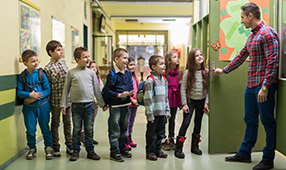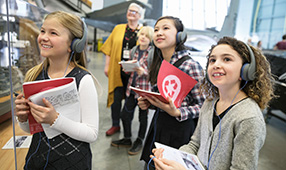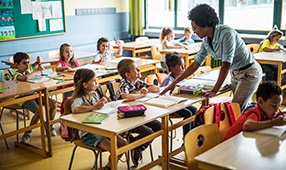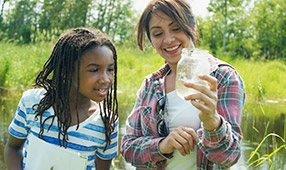Educators know that communicating with students is a key part of their lessons. But in the rush to get through all the instruction and to meet the indicators in a marking period, the way we communicate can get a bit jumbled.
Still, our interactions with our students are just as important as the content we teach.
“Educators are given the opportunity to instill a drive within students to succeed, regardless of a student’s background,” says Sara Hyde, teacher. “Every positive message a student receives at school can encourage a student to take control in determining their future.”
The tone in which you communicate with students also is important, says psychologist Lisa Damour. You might not intend to deflate your students with your words, but if teachers aren’t mindful of their tone, they could do just that, she says.
“Humans are very attuned to nonverbal communication,” Damour says. “Step back and think about all parts of the communication—not just the words, but the music behind it.”
What you say—and how you say it—can have a big impact on your students. Here are five examples of the kinds of things you should say to your students to encourage intellectual risk-taking and cultivate social growth:
“Good morning, Tyler!” Taking the time to greet every child helps put a positive note on their day before it begins, says Jennifer Korte, a first-grade teacher at Howard Elementary School in Dearborn, Michigan.
A personal connection also gets your students in a learning frame of mind. So many teachers simply start the day by getting down to work, Korte says: “They forget that these kids are bouncing off the walls to talk to them.”
Korte says one of her colleagues shakes hands with each student as they enter the classroom in the morning. “She greets them and treats them with respect and is also teaching social skills at the same time,” Korte says.
“How are you doing?” Teenagers in particular are attuned to whether adults care about them as a whole person, Damour says. To demonstrate that you care, communicate a real interest in how students are doing in their school and personal lives.
If you see that a student is struggling with work in history class, for example, make sure you note not just his struggles there, but also his successes in other areas, Damour says.
“When students know you have a personal interest in who they are, it’s much easier to talk with them about the next step they need to take for themselves,” Hyde says.
“Thank you for trying something new.” Success isn’t necessarily measured by whether a child knows the right answer. Sometimes, success comes in the form of risk-taking, which should be celebrated—even if the end result is failure.
“Traditionally, we’ve celebrated students who know the answers,” Damour says. Instead, encourage students to take risks and embrace mistakes: “Say, ‘I am so glad you took that risk. Thank you.’ ”
Remind your students that if they knew everything, you wouldn’t have a reason to be there teaching them new things. Share your own struggles to help create a safe learning environment.
“Let’s focus on the positive.” When students get in trouble, don’t dwell on the negative. Instead, give them time to work through their feelings. Once they calm down, tell them that you know they’ll do better next time.
Korte says she makes sure her students know that she separates the way she feels about their behavior or work from the way she feels about them by saying, “You know I’m not mad at you.” And, she says, “I do tell my kids ‘I love you, sweetheart,’ because they need to hear that.”
“I know you have it in you.” Hyde lets her students know that she’ll be honest about their work and their abilities in the classroom. “If I know they’re capable of doing better work, I question them. I might say, ‘I see that this needs work to be one of your best efforts. What questions do you have for me so you can do your best?’ ” she says. “It’s important to encourage and hold them to their highest standard—not to berate but to be honest.”












